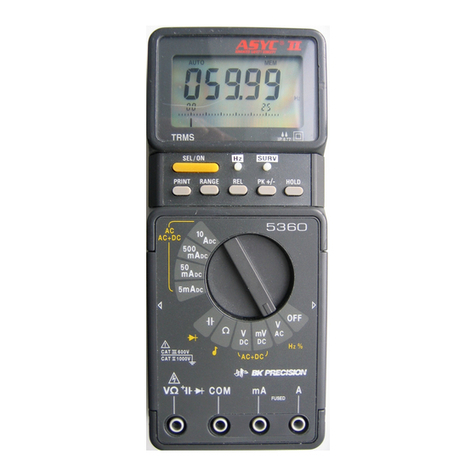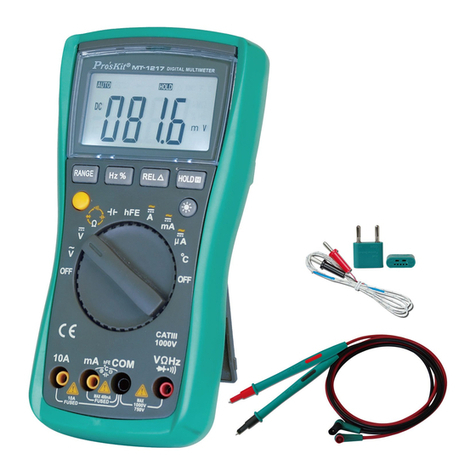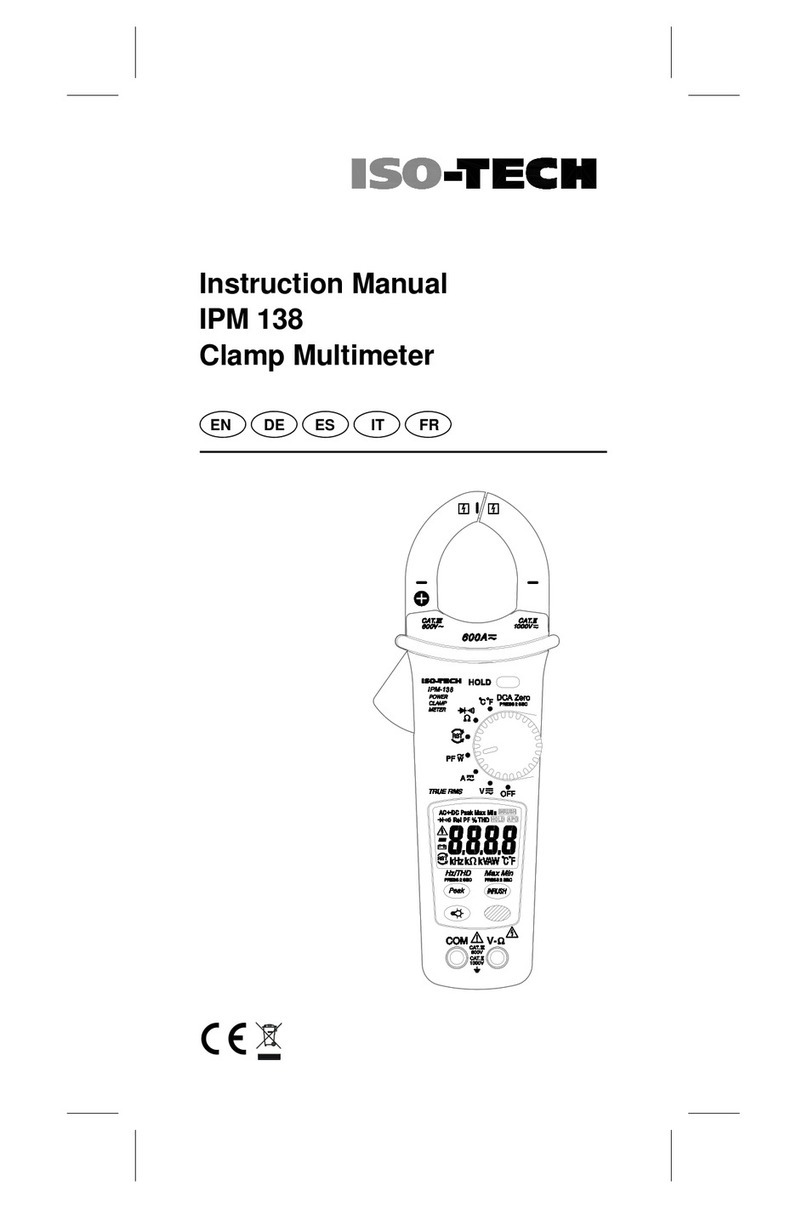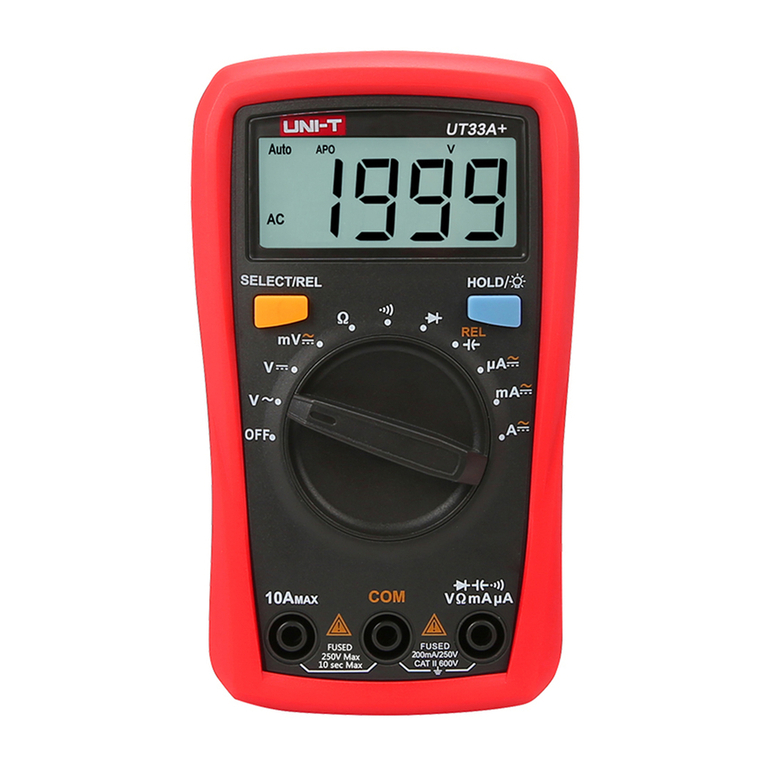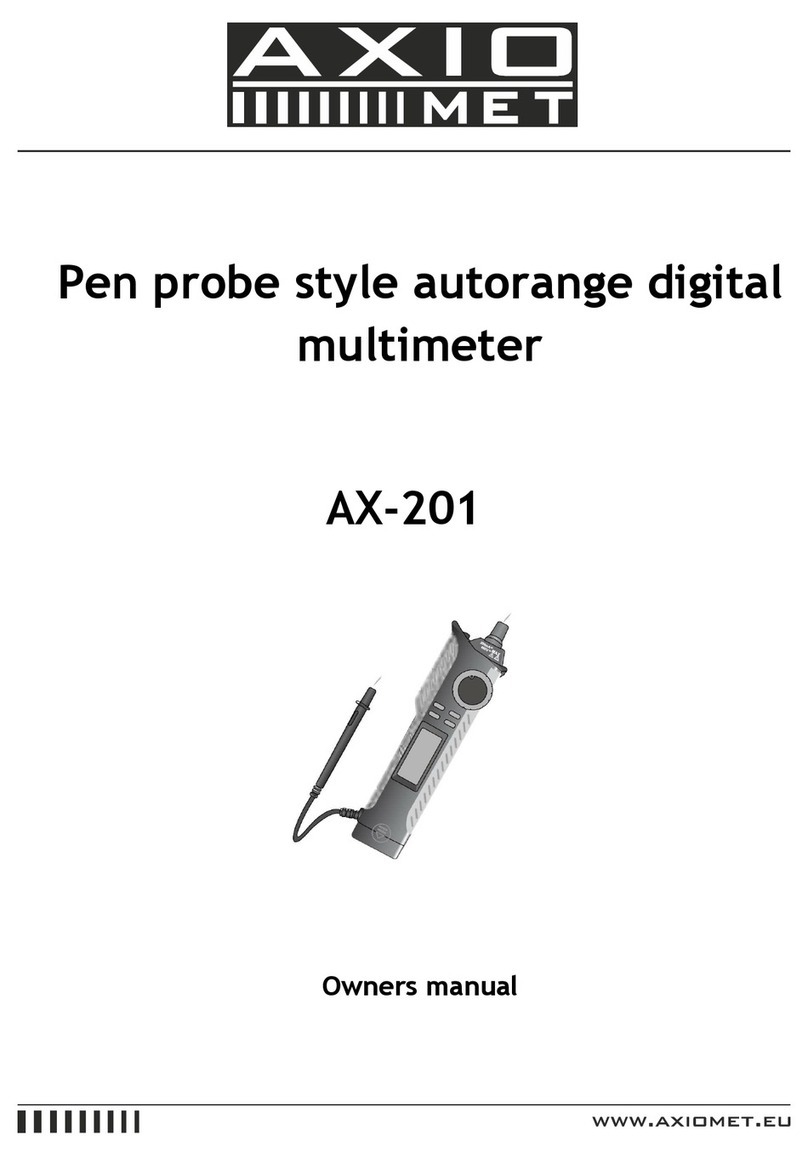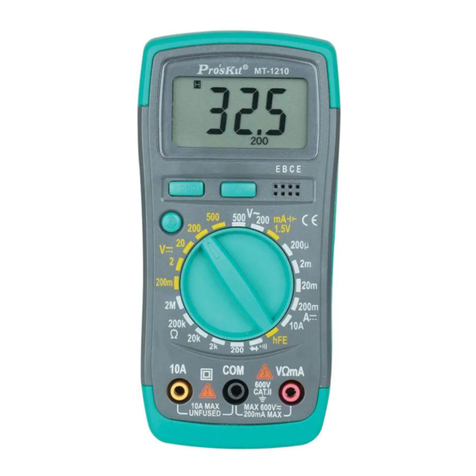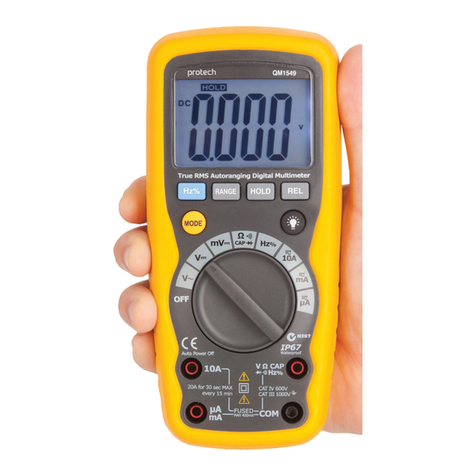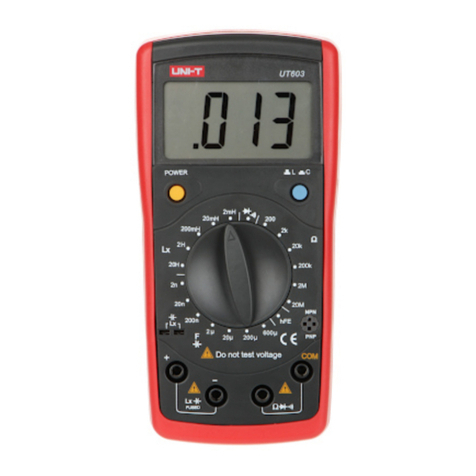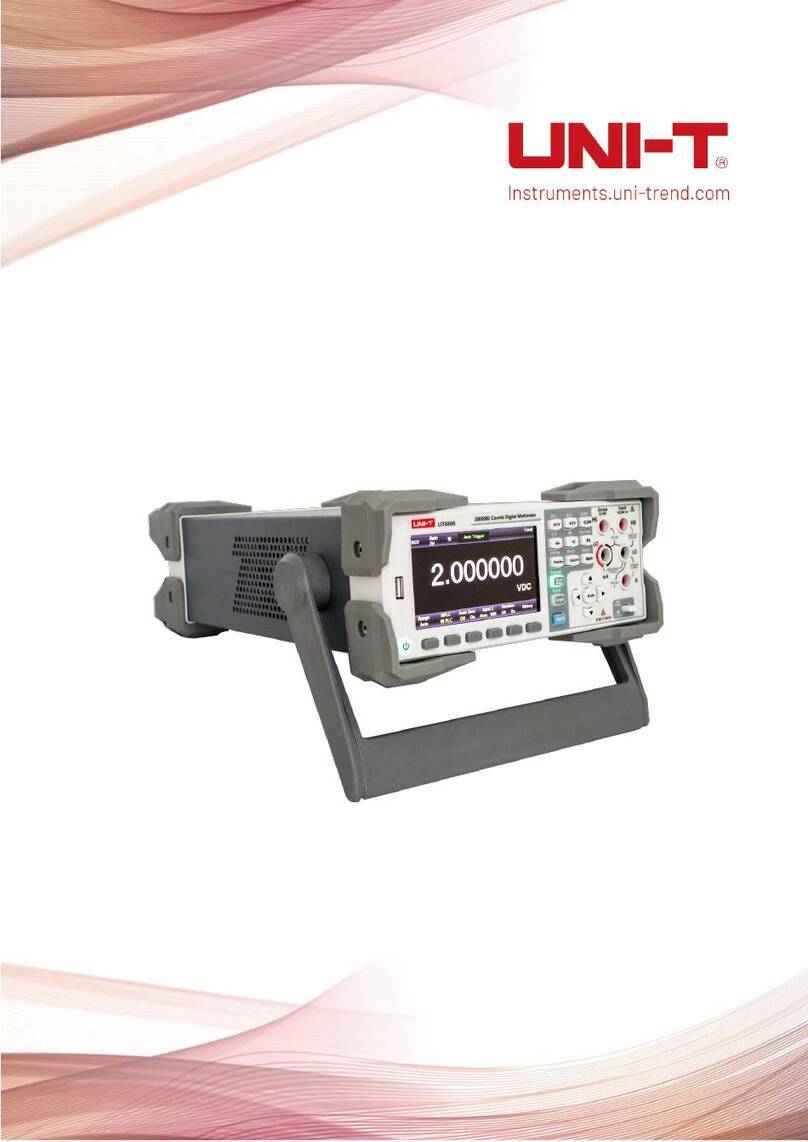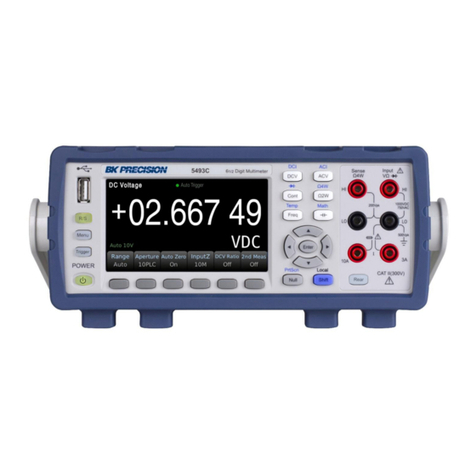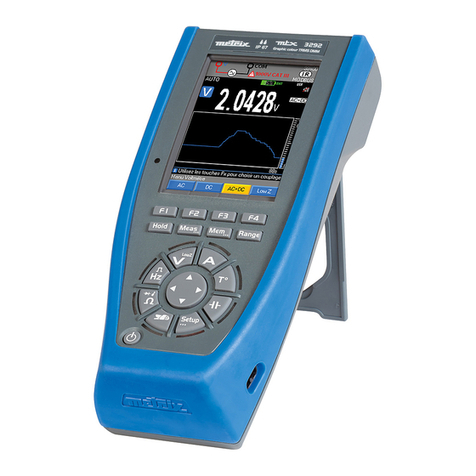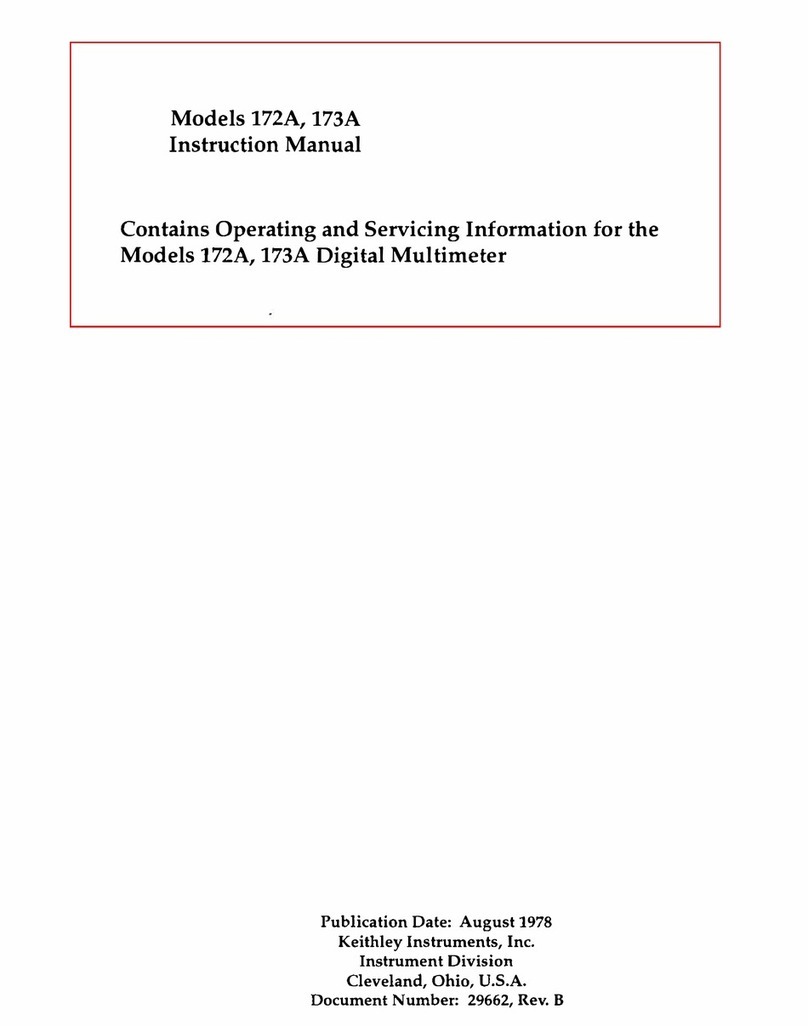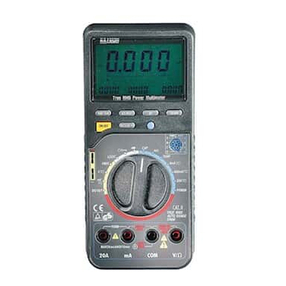Newtons4th PSM3750 NumetriQ User guide

PSM3750
START UP GUIDE
Firmware v1_27
23rd February 2016


PSM3750 Quick User Guide
Page 1
CONTENTS
Contents...........................................................
Page.1
1.
Getting Started.................................................
Page.2
1.1
Unpacking and Contents.......................................
Page.2
1.2
PSM3750 Handle Fitment Instructions....................
Pages.3-4
2.
Safety...............................................................
Page.5
2.1
Safety Instructions...............................................
Page.5
2.2
Cautions.............................................................
Page.6
3.
Warranty Terms................................................
Page.7
4.
Front Panel Layout Diagram..............................
Page.8
4.1
Front Panel Display Key Functions..........................
Pages.9-20
5.
Rear Panel Layout Diagram...............................
Page.21
6.
Basic Key Operation..........................................
Page.22-24
6.1
Set up to start.....................................................
Page.22
6.2
Setting the Time..................................................
Page.22
6.3
Setting the Date..................................................
Page.23
6.4
Adjusting the Display Font....................................
Page.23
6.5
Adjusting Keyboard Beep......................................
Page.24
6.6
Setting User Data................................................
Page.24
7.
Quick User Guide..............................................
Page.25
7.1
Getting Started....................................................
Pages.26-27
7.2
Zoom Functions...................................................
Pages.28-29
7.3
7.4
Measurement Options...........................................
Acquisition..........................................................
Page.30
Pages.30-33
7.5
Sweep................................................................
Pages.34-37
7.6
FRA....................................................................
Pages.38-39
7.7
7.8
8.
8.1
8.2
8.3
8.4
8.5
8.6
8.7
8.8
Trim...................................................................
Comms...............................................................
PSM3750 Measurement Functions.....................
FRA –Frequency Response Analyzer.......................
PAV –Phase Angle Voltmeter.................................
LCR –Impedance Analysis....................................
RMS –True RMS Voltmeter...................................
POWER –Power Meter..........................................
Scope –Oscilloscope............................................
Harmonics - Harmonic Analyzer.............................
EIS - Electrochemical Impedance Spectroscopy.......
Pages.40-41
Pages.42-44
Page.45
Pages.45-47
Pages.48-51
Pages.52-68
Pages.69-70
Page.71
Page. 72
Page. 75
Page. 78-79
9.
COMMS Settings................................................
Pages.80-82
9.1
9.2
10.
11.
12.
13.
Saving Sweep Results to USB memory stick............
Program: Store/Recall/Delete................................
PSMComm2 –PSM3750 Software......................
Basic Functionality Checks................................
Repair & Recalibration Process.........................
PSM3750 Specifications....................................
Pages.83-87
Pages.88-91
Page.92
Pages.93-97
Page.98
Pages.99-102

PSM3750 Quick User Guide
Page 2
1. Getting Started
1.1 Unpacking
When you receive your product, check that the following items are included for
the appropriate PSM Instrument. Refer to the contents list below for each model.
If any item is missing or damaged during transportation, immediately contact
your local sales distributor or N4L office
MODEL
Mains
Lead
Voltage
Probe
4mm
Black
Lead
4mm
Red
Lead
Black
Croc
Clip
Red
Croc
Clip
N4L
2GB
Memory
Stick
Start
Up
Guide
Manual
Comms
Manual
PSM3750 -2C
1
2
3
3
3
3
1
1
1
PSM3750 -3C
1
3
4
4
4
4
1
1
1
PSM3750
Communication Cables
RS232
9 pin null modem cable
USB
2.0 A male to B male 2m lead
IEEE
IEEE Extender Cable 1m long
CONTENTS

PSM3750 Quick User Guide
Page 3
1.2 Fitment of the PSM3750 Carry/Tilt handle
The PSM3750 Phase Sensitive Multimeter is supplied with a Carry/Tilt Handle
that is located within the accessory pack.
The handle allows a user to position the instrument upwards at one of two angles
for easier viewing when the instrument is positioned below the line of sight. The
design also allows storage under the unit without obstruction of the rubber feet
so that instruments can be stacked and is easily removed to allow the connection
of rack mounting brackets without the need to remove instrument covers.
Correct installation of the handle is important to ensure the correct operation
and long life the handle.
The following pictures illustrate correct and incorrect handle fitment:
Correct 1 Correct 2
Correct 1/2 –Correct fitting is from the top of the unit as shown here

PSM3750 Quick User Guide
Page 4
Correct 3 Correct 4
A correctly fitted handle will have the ‘N4L Newtons4th’ wording in the correct
reading plane when the handle is to the front of the instrument (Pic. 3)
Also, a correctly fitted handle will allow storage under the unit (Pic. 4)
Incorrect 1 Incorrect 2
Fitting the handle from the bottom of the unit as shown here is wrong
(Incorrect 1)
Incorrect fitting can be seen because the handle does not fit correctly under the
unit and handle sides do not fit flush with the registration washer (Incorrect 2)

PSM3750 Quick User Guide
Page 5
2. Safety
2.1 IMPORTANT SAFETY INSTRUCTIONS
This equipment is designed to comply with BSEN 61010-1 (Safety requirements
for electrical equipment for measurement, control, and laboratory use) –observe
the following precautions:
Ensure that the supply voltage agrees with the rating of the instrument
printed on the back panel before connecting the mains cord to the supply.
This appliance must be earthed. Ensure that the instrument is powered from
a properly grounded supply.
The inputs and outputs must not be connected to common mode signals
greater than 500V peak.
The inputs must not be connected to signals greater than 500V peak.
Keep the ventilation holes on the underneath and sides free from obstruction.
Do not operate or store under conditions where condensation may occur or
where conducting debris may enter the case.
There are no user serviceable parts inside the instrument –do not attempt to
open the instrument, refer service to the manufacturer or his appointed
agent.
Note: Newtons4th Ltd. shall not be liable for any consequential
damages, losses, costs or expenses arising from the use or misuse of
this product however caused.

PSM3750 Quick User Guide
Page 6
2.2 CAUTIONS
Do not use a damaged power cord or cables
Doing so may cause an electric shock or a fire
Do not place any object on this instrument
Do not use this instrument if faulty
If you suspect the instrument to be faulty, contact your local N4L office or
representative for repair (see section 12)

PSM3750 Quick User Guide
Page 7
3. Warranty
This product is guaranteed to be free from defects in materials and workmanship
for a period of 36 months from the date of purchase
In the unlikely event of a problem within this guarantee period, first contact
Newtons4th Ltd or your local representative to give a description of the problem.
Please have as much relative information to hand as possible –particularly the
serial number and release number these can be found by pressing the SYSTEM
button then the “Left Arrow”
If the problem cannot be resolved directly then you will be given an RMA number
and asked to return the unit. The instrument will be repaired or replaced at the
sole discretion of Newtons4th Ltd
This guarantee is limited to the cost of the PSM3750 itself and does not extend
to any consequential damage or losses whatsoever including, but not limited to,
any loss of earnings arising from a failure of the product or software
In the event of any problem with the instrument outside of the guarantee period,
Newtons4th Ltd offers a full repair and re-calibration service. Contact your local
representative. It is recommended that the PSM3750 be re-calibrated annually

PSM3750 Quick User Guide
Page 8
4. Front Panel Layout
1. Display Screen
2. Screen Display Function Buttons
3. PSM Function Mode Buttons
4. Handle
5. Measurement Control Function Keys
6. Rubber Feet
7. Menu Selection and Cursor Controls
8. Measurement Settings Buttons
9. Front USB Port
10. Power On / Off Button
1 2 3
4
5
10 9 8 7 6

PSM3750 Quick User Guide
Page 9
4.1.PSM3750 Display Key Functions
Key & Sub Categories
Description
ACQU
Acquisition Control: Used for configuring inputs
appropriate to source and nature of signals being
analyzed
Input
Channel selection dependent upon model
PSM3750-2CH
Only 2 input channels available
PSM3750-3CH
Select between 2 or 3 channel inputs
Speed
In normal acquisition mode the window over which
the measurements are computed is adjusted to give
an integral number of cycles of the input waveform.
The results from each window are passed through a
smoothing filter. There are 5 pre set speed options
that adjust the nominal size of the window, and
therefore the update rate and time constant of the
filter. Greater stability is achieved at a slower speed
at the expense of a slower update rate
Very Slow
Update rate = 10s. Results window size will update
every 10 seconds
Slow
Update rate = 2.5s. Results window size will update
every 2.5 seconds
Medium
Update rate = 1/3s. Results window size will update
3 times per second
Fast
Update rate = 1/12s. Results window size will update
12 times per second
Very Fast
Update rate = 1/50s. Results window size will update
50 times per second
Window
The window application will allow the user to input
their own speed settings different to any of the 5 pre
set settings above
Cycles
Manually input number of measurements to be made
at each measurement point, of which the average will
be taken. Set between 1 and 100

PSM3750 Quick User Guide
Page 10
Smoothing
Smoothing filter will gather the data and average out
over a sliding window time scale. This is very useful
when gathering data which could be affected by
noise. Each speed above has its own time constant for
filtering and data updates. Smoothing does not affect
a single sweep as each point is a single
measurement. If Sweep is set to continuous then the
smoothing is applied to each new sweep result
Normal
With Normal smoothing applied the following update
windows will apply to the relevant speed selected.
V.Fast =0.1s, Fast = 0.4s, Medium = 1.5s,
Slow = 12s, V.Slow = 48s
Slow
With Slow smoothing selected all results are X4
greater than in normal smoothing mode
None
With no smoothing to computed results the data
update will be dictated by the speed only
Smoothing Response
Auto Reset
The smoothing response is by default set to “auto
reset” where the filtering described in “smoothing” is
reset in response to a significant change in data. This
speeds up the response of the instrument to changing
conditions
Fixed Time
Auto reset can be disabled so that the filtering has a
fixed time constant, which would have an exponential
response to a step change
Phase Reference
In the case where there is very little signal on CH1,
the reference for the phase can be set to another
channel to give a more accurate measurement. This
does not change the phase results it only helps to
reduce the uncertainty due to noise.
Channel 1
Select to choose Channel 1 as reference
Channel 2
Select to choose Channel 2 as reference
Channel 3
Select to choose Channel 3 as reference (If fitted)
Low Frequency
When the generator is not used and so the
measurement is synchronised to the input frequency
measured on CH1, there is a low frequency option
that extends the frequency measurement down to
10μHz. This low frequency option also applies a digital
filter which can be useful when measuring in low
frequency, noisy environments
Off
Select to switch this mode Off
On
Select to switch this mode On

PSM3750 Quick User Guide
Page 11
Bandwidth
The bandwidth of the instrument usually set to “Auto”
can be forced to “Wide” or “Low” when not in “Auto”
mode, heterodyning is disabled
Wide
Select to set bandwidth to 5MHz
Low
Select to set bandwidth to 100KHz
Auto
Select to set bandwidth into auto mode
SWEEP
All ac measurements using the PSM3750 generator
can be swept across a frequency range
Sweep Start
Manually input sweep start frequency
Sweep End
Manually input sweep end frequency
Steps
Manually enter number of steps the frequency sweep
data is to be analyzed over. Up to a max of 2000
steps
Steps
Log
Set to view the resultant data in a Logarithmic format
Linear
Set to view the resultant data in a Linear format
Sweep
Select between either a single or repeating sweep
Graph 1 Scaling
The graph normally sets the Y axis automatically to
the extremes of the measurement
Auto
Select to leave graph in auto mode
Manual
Select to independently manually set the Y axis
Graph 2 Scaling
The graph normally sets the Y axis automatically to
the extremes of the measurement
Auto
Select to leave graph in auto mode
Manual
Select to independently manually set the Y axis
Frequency Marker
A vertical marker can be placed on the graph to
reference a specific frequency. If selected a new
parameter will open to allow the user to manually
input the frequency reference required

PSM3750 Quick User Guide
Page 12
TRIM
The trim function is a powerful and versatile feature
that allows closed loop control of the generator
amplitude
ac Trim Data
Disabled
Select to disable ac trim function
Channel 1
Select to allow the generators output to be adjusted,
and maintain the measured voltage or current from
CH1
Channel 2
Select to allow the generators output to be adjusted,
and maintain the measured voltage or current from
CH2
Channel 3
Select to allow the generators output to be adjusted,
and maintain the measured voltage or current from
CH3 (If fitted)
COMMS
Resolution
Press to set the data resolution and change the
format to which the instrument responds to future
commands via Comms interface
Normal
Data resolution set to 5 decimal points
High
Data resolution set to 6 decimal points
Binary
Data transmitted in binary format
Interface
Communications type between instrument and pc
RS232
RS232 Comms interface
USB
USB Comms interface
LAN
LAN Comms interface
GPIB
GPIB Comms interface
Recall with Program
When enabled recalls communication port settings
from any stored memory location
Off
Turn OFF this option
On
Turn ON this option
Screen Print
Disabled
No screen print option selected
RS232
Print screen via RS232 cable i.e. to a printer
USB Memory Stick
Print screen directly onto a USB memory stick. To
activate press and hold the START button for 2
seconds and then release. A BMP file is then
transferred to the memory stick

PSM3750 Quick User Guide
Page 13
ALARM
Alarm 1 Data
Alarm on selected parameter and threshold
Zoom 1
Zoom 1 parameter selected for alarm threshold
Zoom 2
Zoom 2 parameter selected for alarm threshold
Zoom 3
Zoom 3 parameter selected for alarm threshold
Zoom 4
Zoom 4 parameter selected for alarm threshold
Alarm Type (Alarm 1)
Disabled
No alarm
Linear
Frequency of beep increases linearly as value reaches
its limit
Alarm if High
Alarm will sound if values exceed a threshold
Alarm if Low
Alarm will sound if values fall below a threshold
Outside Window
Alarm will sound if values are outside a permitted
window setting
Inside Window
Alarm will sound if values are within a permitted
window setting
Alarm 2 Data
Alarm on selected parameter and threshold
Zoom 1
Zoom 1 parameter selected for alarm threshold
Zoom 2
Zoom 2 parameter selected for alarm threshold
Zoom 3
Zoom 3 parameter selected for alarm threshold
Zoom 4
Zoom 4 parameter selected for alarm threshold
Alarm Type (Alarm 2)
Disabled
No alarm
Linear
Frequency of beep increases linearly as value reaches
its limit
Alarm if High
Alarm will sound if values exceed a threshold
Alarm if Low
Alarm will sound if values fall below a threshold
Outside Window
Alarm will sound if values are outside a permitted
window setting
Inside Window
Alarm will sound if values are within a permitted
window setting
Analogue Output
Disabled
No analogue output
Zoom 1
Set an analogue output voltage representative of
zoom 1
Zoom 2
Set an analogue output voltage representative of
zoom 2
Zoom 3
Set an analogue output voltage representative of
zoom 3
Zoom 4
Set an analogue output voltage representative of
zoom 4
Manual
Set a constant analogue output voltage

PSM3750 Quick User Guide
Page 14
AUX
None
No auxiliary device connected
IAI
Impedance Analysis Interface- converts the PSM3750
into a high performance LCR meter with true 4 wire
kelvin connections that are taken directly to the
component under test without the need for external
shunts. Buffering, amplification and selectable shunts
provide LCR measurements over a wide frequency and
impedance range
OUT
PSM3750 has a wide bandwidth, isolated, generator
output that can be used as a signal generator to
produce various waveforms
Waveform
Sinewave
Select for sinewave output signal
Squarewave
Select for squarewave output signal
Triangle
Select for triangle output signal
Sawtooth
Select for sawtooth output signal
White Noise
Select for true white noise output signal
Amplitude Control
V
Set amplitude as a peak output voltage
dBm
Set amplitude in dBm with reference to 600Ω load
Amplitude
Manually enter the amplitude Vpk value to be applied
To the DUT
Amplitude Step Size
Manually enter a value by which the amplitude will
increase / decrease in relation to pressing the up and
down arrows, the new value will be displayed within
the real-time display (except for the Harmonic and
Power Analyzer where the up and down arrow step the
selected harmonic)
Amplitude Ceiling
Amplitude ceiling represents the maximum value
allowed to the output of the generator, this is used
when you are using the “trim”function and do not
want the output of the generator to go above a certain
value, for example if the PSM output is being used to
control a DC+AC load bank and you do not want the
load bank to go above or below a certain resistance
Offset
Manually enter any offset to bias the signal or to null
out any dc present
Frequency
Manually set the frequency of the generator. This can
be adjusted by a fixed increment set within the
“Frequency step size” via the left and right arrows

PSM3750 Quick User Guide
Page 15
Step Type
Logarithmic
dBm
Linear
V
Frequency Step Size
Manually enter a value by which the frequency will
increase / decrease in relation to pressing the left and
right arrows
Output
Off
Signal generator output will be switched off
On
Select to switch on signal generator
dc Only
Select signal generators output control to be dc only
CH1
Channel 1 input control
Input
Direct
Select if input signal is connected directly into the
PSM3750 internal shunt connectors
External Shunt
Select if Channel 1 input signal is via an external
shunt
External Attenuator
Select if Channel 1 input signal is via an external
attenuator
Autoranging
Full Autorange
Default setting. Full autoranging will be selected and
implemented within the instrument
Range up Only
Selecting this option will allow the test being carried
out to find the highest range via peak detection and
hold on this range. Once this value has been found
another test can be carried out by pressing the
“Trigger” button which will restart from the minimum
value parameter. Essential for low frequency
measurements
Manual
Selecting this option will allow the user to set up the
range from the configured measurements available.
Essential for low frequency measurements
Minimum Range
Select the minimum voltage range from the drop-
down menu
Scale Factor
Manually set the scale factor required
Attenuator
Manually enter scale factor if input is via external
attenuator
Shunt
Manually enter shunt value if input is via external
shunt

PSM3750 Quick User Guide
Page 16
Coupling
ac+dc
Default setting will allow both ac and dc signals to be
calculated in all measurements
ac
Select ac for measuring signals that are biased on a
dc level (such as an amplifier operating on a single
supply or the output of a dc PSU)
CH2
Channel 2 input control
Input
Direct
Select if input signal is connected directly into the
PSM3750 internal shunt connectors
External Shunt
Select if Channel 2 input signal is via an external
shunt
External Attenuator
Select if Channel 2 input signal is via an external
attenuator
Autoranging
Full Autorange
Default setting. Full autoranging will be selected and
implemented within the instrument
Range up Only
Selecting this option will allow the test being carried
out to find the highest range via peak detection and
hold on this range. Once this value has been found
another test can be carried out by pressing the
“Trigger” button which will restart from the minimum
value parameter. Essential for low frequency
measurements
Manual
Selecting this option will allow the user to set up the
range from the configured measurements available.
Essential for low frequency measurements
Minimum Range
Select the minimum voltage range from the drop
down menu
Scale Factor
Manually set the scale factor required
Attenuator
Manually enter scale factor if input is via external
attenuator
Shunt
Manually enter shunt value if input is via external
shunt
Coupling
ac+dc
Default setting will allow both ac and dc signals to be
calculated in all measurements
ac
Select ac for measuring signals that are biased on a
dc level (such as an amplifier operating on a single
supply or the output of a dc PSU)

PSM3750 Quick User Guide
Page 17
SYS
General system options
Set Clock
Manual setting required. Use numerical keys
Set Date
Manual setting of date and year required, month
settings are preset
Display
Colour
Select to set screen display in colour
White on Black
Select to set screen display in White font on a Black
background
Black on White
Select to set screen display in Black font on a White
background
Brightness
Low
Screen brightness will be set to low
High
Screen brightness will be set to high
Phase Convention
Measurements of Phase can be expressed in one of
three formats:
-180⁰ to +180⁰
Commonly used in circuit analysis
0⁰ to -360⁰
Commonly used in power applications
0⁰ to +360⁰
Select as required
Phase Reference
Phase Reference “Sine”or “Cosine”only changes the
phase of a harmonic, you will see this within Harmonic
Mode only
Cosine
Select as required
Sine
Select as required
Blanking
Blanking only activates for LCR mode when
compensation changes the measured value by a factor
of 8 or more, the display will blank to zero
Off
Function will be disabled
On
Function will be enabled
Keyboard Beep
Audible sound when keys are pressed
Disabled
Audible sound disabled
Enabled
Audible sound enabled
Program 1-6 Direct
Load
Program 1-6 may be recalled with a direct press of the
function keys (FRA, PAV, LCR, RMS etc)
Disabled
Function will be disabled
Enabled
Function will be enabled

PSM3750 Quick User Guide
Page 18
Zoom 2 High
Resolution
The data displayed in zoom 2 may be displayed to one
digit greater resolution than normal
Disabled
Function will be disabled
Enabled
Function will be enabled
Show Scaled Range
Disabled
Function will be disabled
Enabled
If enabled and you set a scale factor on CH1 or CH2
the “re-scaled range”would appear in the relevant
column
Step Message
Disabled
Function will be disabled
Enabled
Function will be enabled
←System Information
The information given in this section cannot be
changed by the user
Serial Number
Instruments unique serial number
Manufacturing Code
Code attributed to build date of instrument
Main release
Current firmware release installed in instrument
DSP Release
Digital Signal Processing release version
FPGA Release
Field Programmable Gate Array release version
Boot Release
Release version of instruments boot up firmware
Last Calibration
Instruments last calibration date
Auxiliary Calibration
Associated IAI auxiliary device calibration information
→User Data
Supervisor Access
Enable or Disable
User Data
Manually enter company name
User Data
Manually enter individual or company
User Data
Manually enter unique ID for instrument
Save
Save all above settings
MODE
Function Control
True RMS Voltmeter
The RMS voltmeter measures the total rms of the
signal present at the input terminals to the bandwidth
of the instrument (>1MHz). Care must be taken when
measuring low signal levels to minimise noise pick up
on the input leads
Frequency Response
Analyzer
PSM3750 Frequency response analyzer measures the
gain and phase of channel 2 relative to channel 1
using a Discrete Fourier Transform (DFT) algorithm at
the fundamental frequency
Other manuals for PSM3750 NumetriQ
2
This manual suits for next models
2
Table of contents

